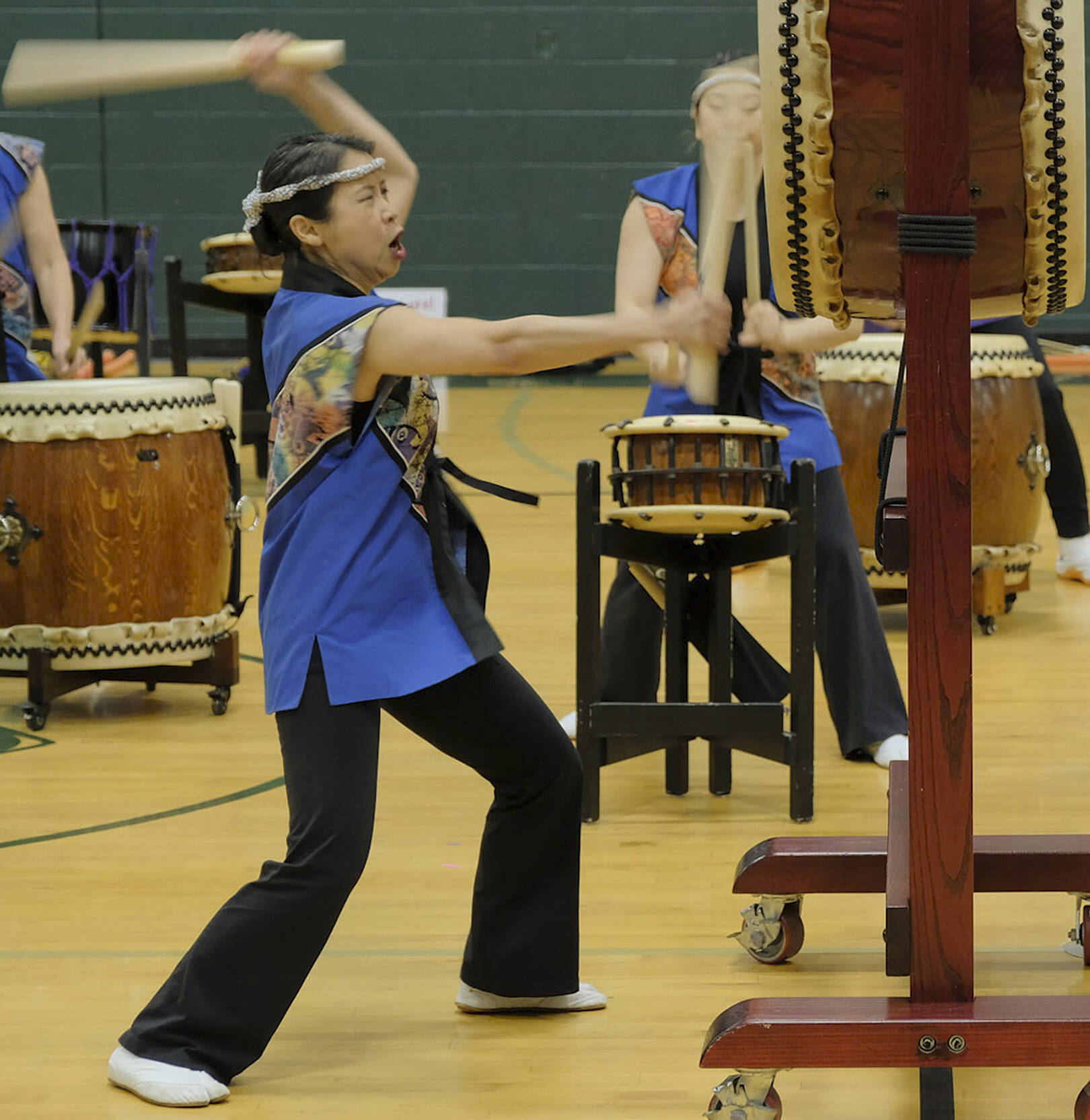The Bainbridge Island Japanese American Community held its annual Mochi Tsuki Festival Jan. 8 at Woodward Middle School.
The ceremony has been a public event since the early 1970s on BI. Since then, it has grown in popularity and scope. This year, events included the preparation of the mochi dough, a separate event in which the dough was formed into edible portions, an Obon community dance class, origami folding lessons, an opportunity to meet with the artists responsible for the BI Japanese American Exclusion Memorial Departure Deck art installation, and performances by the Seattle Kokon Taiko drum crew.
Traditionally, Mochi Tsuki is after the late fall/early winter rice harvest in Japan, when a portion of the crop is soaked, then steamed, then pounded into a thick dough. Several wooden pounding mallets, called kine, are used by participants who work on the rice in a stone mortar, or usu. The rice is a high-gluten type (mochigome) that lends a characteristic elasticity to the dough, which is shaped then used in both sweet and savory dishes. The Mochi Tsuki can be a solitary labor, but when performed as part of a community get-together, it forms a part of the Matsuri festival greeting the New Year.
The Mochi Tsuki this year began with the rice cooking/pounding event that enlisted the help of anyone interested in attending…under the skilled tutelage of Mike Okano, who managed the event, and whose family began the BI Mochi Tsuki. Okano was assisted by other trained helpers, some of whom, like Tony Egashira, appeared to actually risk harm by diving into the usu to manage the dough between kine impacts.
At the Taiko presentation, attended by around 1,500 people, about 50% of the attendees raised their hands saying they were there for the first time. At the BIJAEM art exhibit, Megan Fowler said she’s been on BI for two years and was interested in attending but finally had the chance this year. James Minola had a similar story. Although a BI resident for some time, and eager to see it for years, it was the first time that that he and his family attended.



